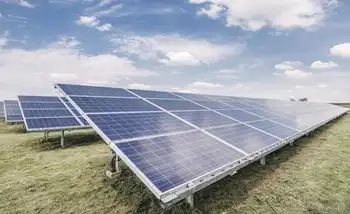Buffalo still staggering without power
BUFFALO, NEW YORK - A week after a freak snowstorm buried Buffalo, the city is still struggling to cope with cleanup and as many as 100,000 people remain without power.
The aftermath of 60 centimetres of snow falling in October has left much of the "City of Trees" looking like a beaver dam. Peter Cutler, spokesperson for the City of Buffalo, said at least 90 per cent of the trees have been damaged or have been "absolutely massacred."
Officials say the mild weather, coupled with leaves still on the branches created perfect conditions for trees to fall.
Power has been restored to about 75 per cent of the 400,000 people who lost electricity last week. Businesses and city services have been up and running since earlier this week, but schools will remain closed until October 23.
National Grid spokesperson Alberto Bianchetti said that the power company hopes to have electricity restored to 90 per cent of its customers by October 21. More than 4,000 workers from 11 states and even Quebec have been on the ground since the storm.
Within 36 hours of the snowfall, he said the company knew it would take about a week to restore power due to the “unprecedented devastation.” There were 10,000 services wires that needed to be replaced, 400 broken poles and 200 damaged transformers.
“The devastation from the trees took out so many power lines, we could not send students to school because it was too dangerous for them to be out on the streets with limbs falling and lives power lines lying around,” said Heather Groll, spokesperson for Buffalo Public School Board. “If that same two feet of snow had falling in Toronto, you would’ve faced the same problems in areas with mature trees.”
The storm is blamed for the deaths of 12 people, with at least one personal killed by a falling tree limb, two killed by carbon monoxide poisoning and another two dying after shovelling snow. The causes of the other deaths have not yet been reported.
City spokesperson Cutler said there was no way to devise an emergency preparedness plan to deal with the issue of heavy snow, leaves and mild weather.
He added that while power is nearly back to normal, clean up could take months. City crews and contracted workers, who have come from as far as Louisiana and Alabama with experience in hurricane clean up, have been working around the clock.
Health officials are urging residents to act with caution as 200 individuals have suffered some carbon monoxide poisoning from improper use of generators and stoves. Many more have walked into hospitals with bad cuts from tree clearing. Heart attacks have been reported as well.
Michael Hughes, spokesperson for Kalieda Health, a company that runs five hospitals and four nursing homes in the area, said staff have been working up to 16 hours a day to make sure residents get proper medical treatment.
The stateÂ’s heath department dispatched 17 extra nurses to the region to cope with the high demand, the first time a special emergency-nursing program has been used since the 9/11 attacks.
Residents of Fort Erie and nearby Port Colborne were being urged to boil their water and to have their well water tested before using.
Authorities say the power outages and the flooding caused by the melting snow may have affected the quality of water in private wells.
Hydro One says it sent 25 personnel to the Fort Erie area to help restore power.
In a good sign, some of the emergency shelters run be the American Red Cross that were set up to provide heat and food are starting to shut down as residents can go home. Nearly 14,000 meals were served and 1,400 housed since the storm.
Related News

Alberta Faces Challenges with Solar Energy Expansion
ALBERTA - Alberta's push towards expanding solar energy is encountering significant financial and environmental hurdles. The province's ambitious plans to boost solar power generation have been met with both enthusiasm and skepticism as stakeholders grapple with the complexities of integrating large-scale solar projects into the existing energy framework.
The Alberta government has been actively promoting solar energy as part of its strategy to diversify the energy mix and reduce greenhouse gas emissions. Recent developments have highlighted the potential of solar power to contribute to Alberta's clean energy goals. However, the path forward is fraught with challenges related to costs, environmental…




